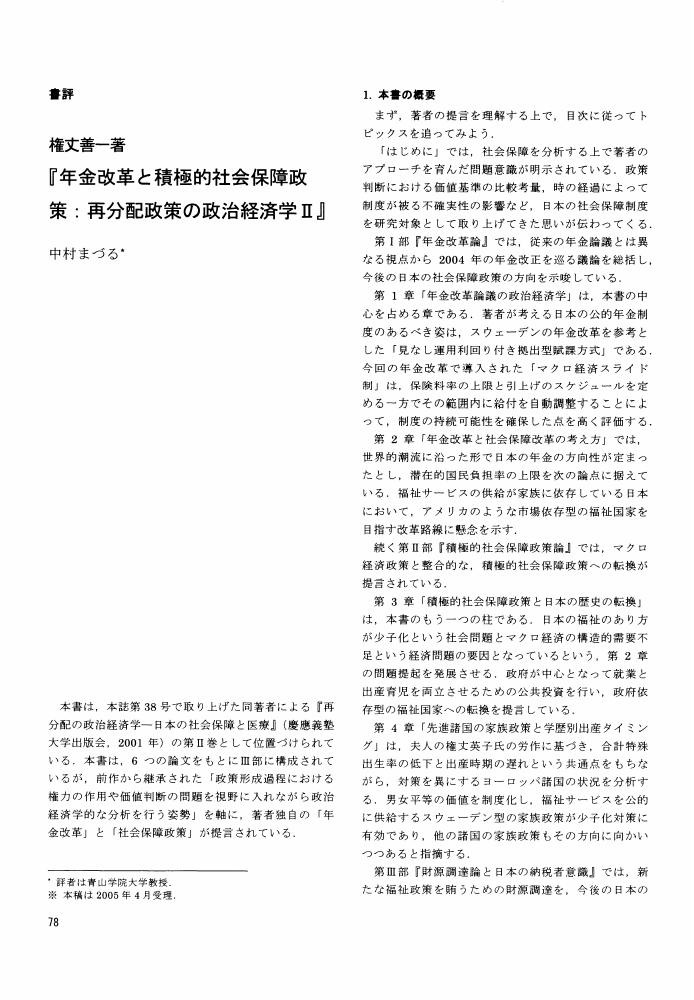5 0 0 0 OA 集合行為と社会的規範の進化
- 著者
- エリノア オストロム 木村 久徳 中村 まづる
- 出版者
- 公共選択学会
- 雑誌
- 公共選択の研究 (ISSN:02869624)
- 巻号頁・発行日
- vol.2010, no.54, pp.3-19, 2010-08-15 (Released:2013-07-31)
- 参考文献数
- 84
3 0 0 0 OA 公的年金制度改革: 市場の失敗と政府の失敗の間で
- 著者
- 中村 まづる
- 出版者
- 公共選択学会
- 雑誌
- 公共選択の研究 (ISSN:02869624)
- 巻号頁・発行日
- vol.1999, no.32, pp.32-48, 1999-07-01 (Released:2010-10-14)
- 参考文献数
- 47
Pension program provides income distribution between younger workers and older retirees who would otherwise live in poverty on inadequate savings. The changing demographic structure of the population will result in a higher proportion of retirees to workers. The pay-as-you-go method of financing public pension is a crucial aspect of the current program and of its financial problem. If nothing were done to change the current program, it is likely that the social security tax rate would have to rise very rapidly in the years ahead, which might cause a public distrust in the program itself.Public management of the program has been justified in the view of“market failure”of social security in economics, however, it is apparent that“welfare state”has increased fiscal deficits among democratic countries. It is paradoxical that a demographic change is preventing the public management of social security attain the economic goal of not only efficiency but also equity because of financial difficulties.On the other hand, the public choice theory has pointed out that democratic decision making process results in income distribution through majority rule since its early stages. Now it is time that the basic structure of the public pension program has to be reexamined and reshaped to fit the economic conditions of today.The World Bank proposed how to reform social security programs. The proposal restricts the roll within minimum standard of living, while privatize its management into market mechanisms, which inspired various arguments the reform in Japan. The purpose of this paper is to examine the idea of constitutional reform to evaluate their performances, and propose the rules within the reform in order to prevent any rooms of government failure.
2 0 0 0 OA 権丈善一著『年金改革と積極的社会保障政策: 再分配政策の政治経済学II』
- 著者
- 中村 まづる
- 出版者
- 公共選択学会
- 雑誌
- 公共選択の研究 (ISSN:02869624)
- 巻号頁・発行日
- vol.2005, no.44, pp.78-80, 2005-07-10 (Released:2010-10-14)
1 0 0 0 OA 加藤寛先生を偲んで 制度改革の政治経済学
- 著者
- 中村 まづる
- 出版者
- 公共選択学会
- 雑誌
- 公共選択 (ISSN:21872953)
- 巻号頁・発行日
- vol.2013, no.60, pp.5-7, 2013 (Released:2020-05-03)


